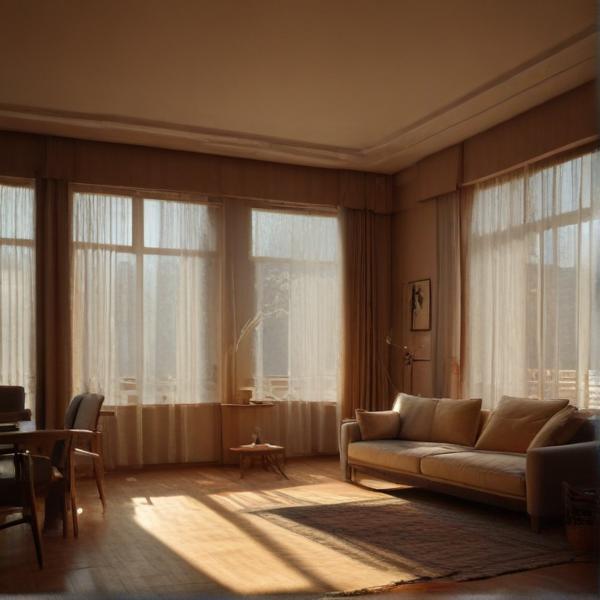基本信息 (Basic Information)
含义与用法 (Meanings & Usage)
中文核心释义 (Core Chinese Meaning): 房间;屋子。用于指一个有墙壁和屋顶的居住或活动的空间。
英文核心释义 (Core English Meaning): room; chamber; a space enclosed by walls and a roof, used for living or activities.
象形意义 / 为何这么写 (Pictographic Meaning / Writing Rationale)
文言文释义 (Classical Chinese Meaning)
与现代意义相近,主要指居住或活动的房间、屋子。Similar to modern meaning, mainly referring to a room or chamber for residence or activities.
深入学习 (In-depth Study)
字源故事 (Origin Story)
字形演变 (Character Evolution)
常用词语和例句 (Common Words & Examples)
教室 (classroom)
学生们正在教室里上课。
Eng: The students are having class in the classroom.
卧室 (bedroom)
我的卧室里有一张大床。
Eng: There is a big bed in my bedroom.
办公室 (office (room))
他的办公室在二楼。
Eng: His office is on the second floor.
相关成语 (Related Idioms)
相关成语信息待补充。Related idiom information pending.
多语言翻译 (核心释义) (Translations (Core Meaning))
- French: pièce (d'une maison), chambre
- German: Zimmer, Raum
- Spanish: habitación, cuarto, sala
- Italian: stanza, camera
- Portuguese: sala, quarto, cômodo
- Russian: комната, помещение
- Arabic: غرفة، حجرة
- Persian: اتاق، حجره
- Dutch: kamer, ruimte
- Polish: pokój, pomieszczenie
- Vietnamese: phòng, buồng
- Ukrainian: кімната, приміщення
视频学习资源 (Video Learning Resources)
通过以下链接在热门视频网站搜索 "室" 的更多讲解:
Search for more explanations of "室" on popular video sites:
- 在 Bilibili.com 搜索 "室 字源 说文解字" (Search on Bilibili)
- 在 YouTube.com 搜索 "室 character origin etymology" (Search on YouTube)
网络参考 (Web References for "室") ()
网络内容摘要 (Web Content Summary):
室的核心含义是“房间”或“屋内空间”。Shì mainly means "room" or "indoor space".
“室”最早见于甲骨文,其字形由“宀”(表示屋顶)和“至”(象征有人卧倒或进入屋内)组成,体现了一个人在屋子里的形象。这反映了古人重视居住和家庭生活的文化背景。The character “室” appeared first in oracle bone inscriptions. Its structure contains “宀” (roof) and “至” (person lying or entering), symbolizing someone inside a house. This reflects ancient Chinese culture's focus on dwelling and family life.
-
特别用法:古代建筑中,“堂”在前,为待客、会事之所;“室”在后,为家人起居或重要储藏之地。现代汉语中,“室”常用于多种房间名称,如“教室”(classroom)、“卧室”(bedroom)、“办公室”(office)。Special usage: In ancient buildings, "堂" was the front (for guests/ceremonies), "室" was at the back (for private/family use). Today, “室” is used in compound words for various rooms, e.g., “教室” (classroom), “卧室” (bedroom), “办公室” (office).
-
易混淆点:“室”易与“房”混用。严格来说,两者有差别;“室”偏重于正式、封闭空间,而“房”更泛指居住空间。Common confusion: “室” and “房” can be mixed up. Technically, “室” refers to more formal, enclosed rooms, while “房” can mean any living space more generally.
-
常用词/成语:如“家室”(family/one's family)、“密室”(secret room)、成语“金屋藏娇”(to keep one's beloved in a luxurious house)。Common words/idioms: e.g., “家室” (family/household), “密室” (secret chamber), idiom “金屋藏娇” (to keep a beloved woman in a golden house).
【室】的甲骨文金文篆文字形演变含义 - 甲骨文研究网 甲骨文密码字典 在线甲骨文字典研究 - 甲骨文研究网 甲骨文密码字典 在线甲骨文字典研究 认路
汉字的来历和演变(說文解字 篆體字)(金文)(甲骨文)甲骨文密码【甲骨密码】【其他解读】至,表示倒卧、躺下。 ... 室,甲骨文=(宀)+(至,躺下 . rss. ... 汉字甲骨文破译字典》一书中,破解的古诗、竹简等古文作品收录在《新编甲骨文破译案例解析 ...
室的解释|室的意思|汉典"室"字的基本解释 - 漢典
室 shì 〈名〉 (1) (会意。 从宀从至。人到屋中就停止了。本义:内室) (2) 同本义 [room behind hall;room] 。 堂后之正室。古人房屋内部,前叫 "堂" ,堂后以墙隔开,后部中央叫 "室" ,室的东西两侧叫 "房". 室,实也。—— 《说文》 。 段 注: "古者前堂后室。 释名曰:"室,实也,人物实满其中也。
更多图片 (室 More Images) ()
